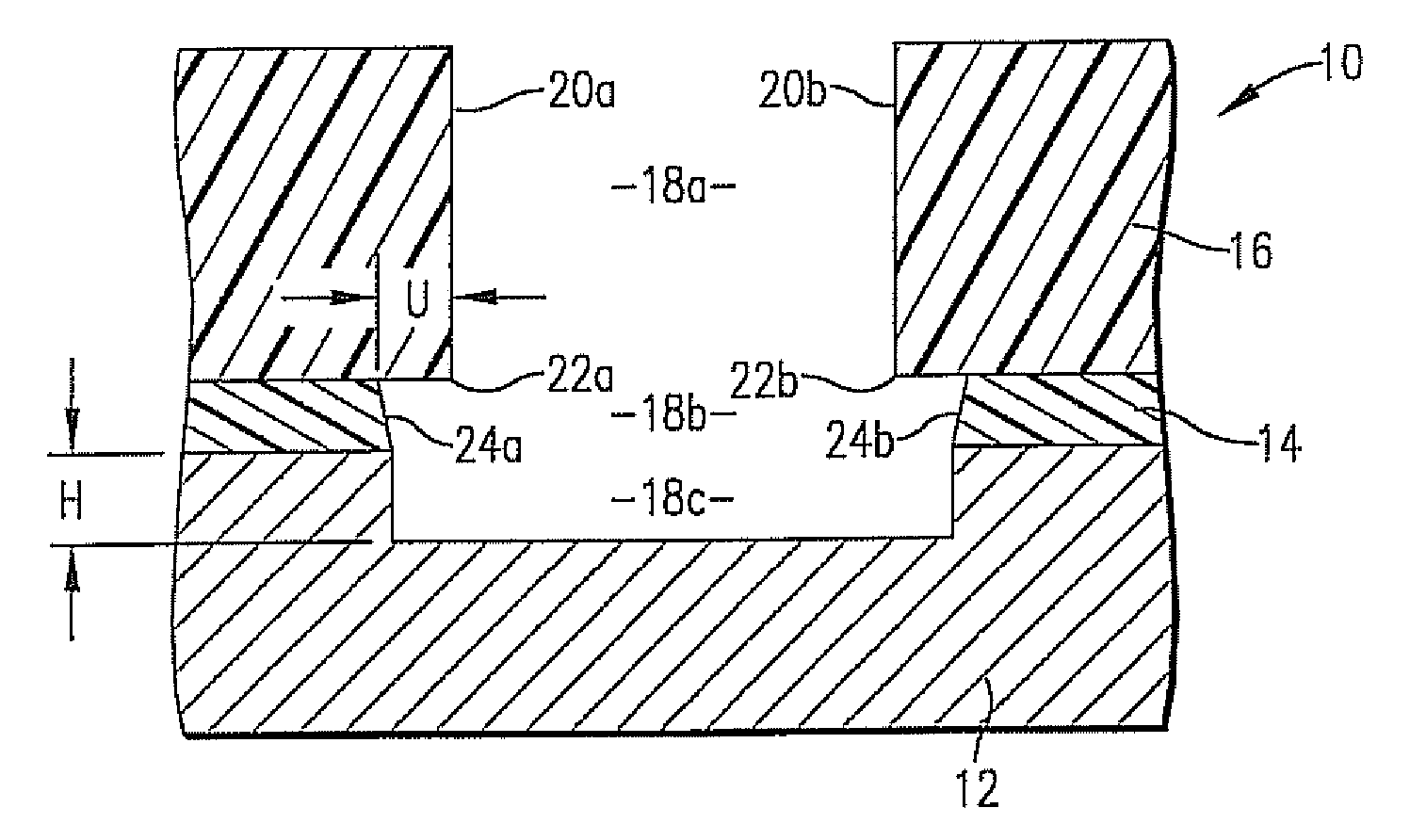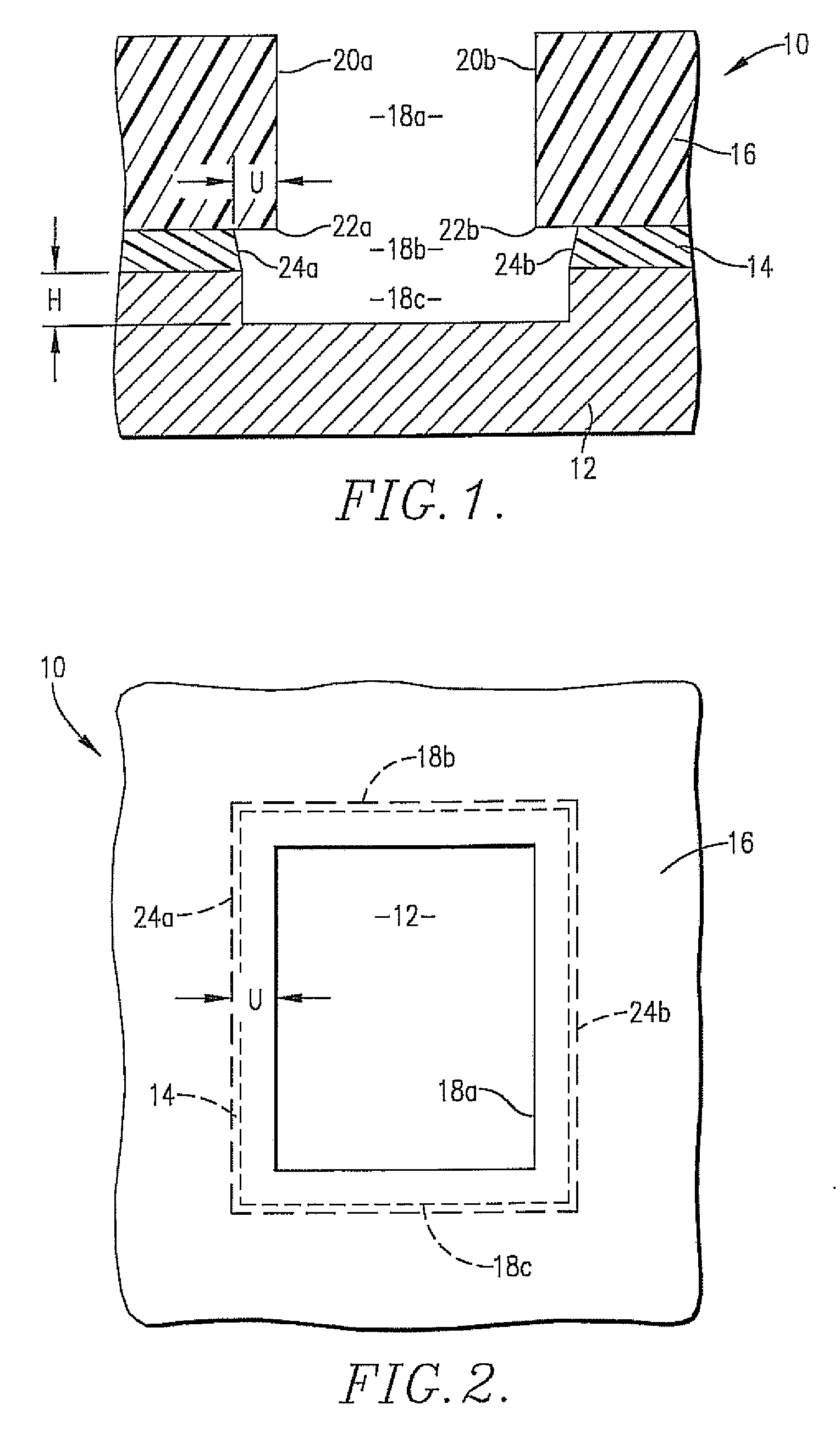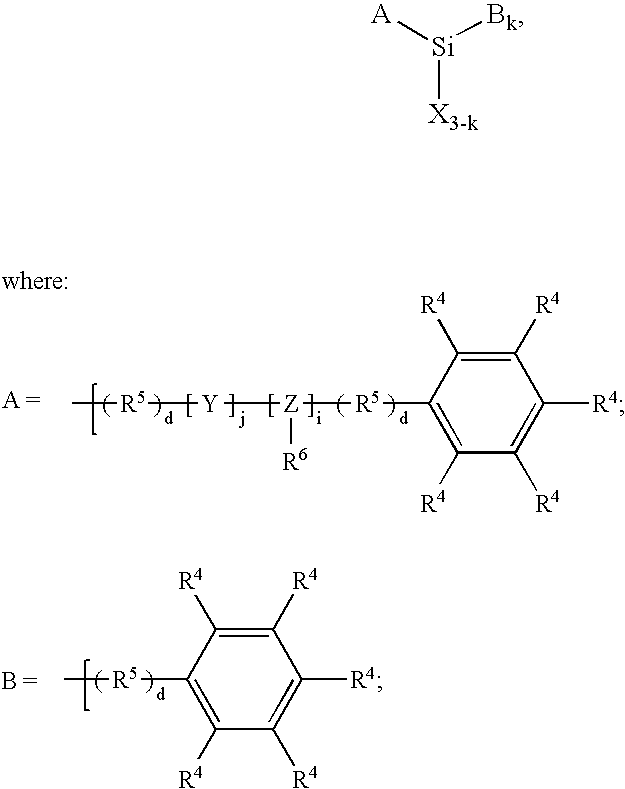Alkaline-resistant negative photoresist for silicon wet-etch without silicon nitride
- Summary
- Abstract
- Description
- Claims
- Application Information
AI Technical Summary
Benefits of technology
Problems solved by technology
Method used
Image
Examples
example 1
Primer Solution Formulation
[0066]To prepare a primer solution, 2.04 g of N-phenylaminopropyl-trimethoxysilane (obtained from Gelest, Morrisville, Pa.) were dissolved in a mixture of 77.50 g of propylene glycol propyl ether (PnP; obtained from General Chemical, Parsippany, N.J.), 120.14 g of deionized water, 0.51 g of acetic acid (obtained from Aldrich, Milwaukee, Wis.), and 0.03 g of FC-4430 (a surfactant, obtained from 3M, St. Paul, Minn.). The solution was stirred magnetically for more than 2 hours. It was then filtered through a 0.1-μl membrane filter.
example 2
Copolymer Solution Preparation
[0067]A copolymer solution was made by dissolving 150.1 g of polystyrene-co-polyacrylonitrile copolymer (obtained from Bayer USA, Pittsburgh, Pa.) in a mixture of 595.0 g of propylene glycol methyl ether acetate (PGMEA; obtained from General Chemical, Parsippany, N.J.) and 255.0 g of ethyl acetoacetate (EAA; obtained from Harcros, Kansas City, Kans.).
example 3
Photoacid Generator Solution Preparation
[0068]A photoacid generator (PAG) solution was made by dissolving 60.02 g of UVI-6976 (obtained from Dow Chemical, Midland, Mich.) in 140.08 g of PGMEA.
PUM
| Property | Measurement | Unit |
|---|---|---|
| Fraction | aaaaa | aaaaa |
| Fraction | aaaaa | aaaaa |
| Fraction | aaaaa | aaaaa |
Abstract
Description
Claims
Application Information
 Login to View More
Login to View More - R&D
- Intellectual Property
- Life Sciences
- Materials
- Tech Scout
- Unparalleled Data Quality
- Higher Quality Content
- 60% Fewer Hallucinations
Browse by: Latest US Patents, China's latest patents, Technical Efficacy Thesaurus, Application Domain, Technology Topic, Popular Technical Reports.
© 2025 PatSnap. All rights reserved.Legal|Privacy policy|Modern Slavery Act Transparency Statement|Sitemap|About US| Contact US: help@patsnap.com



